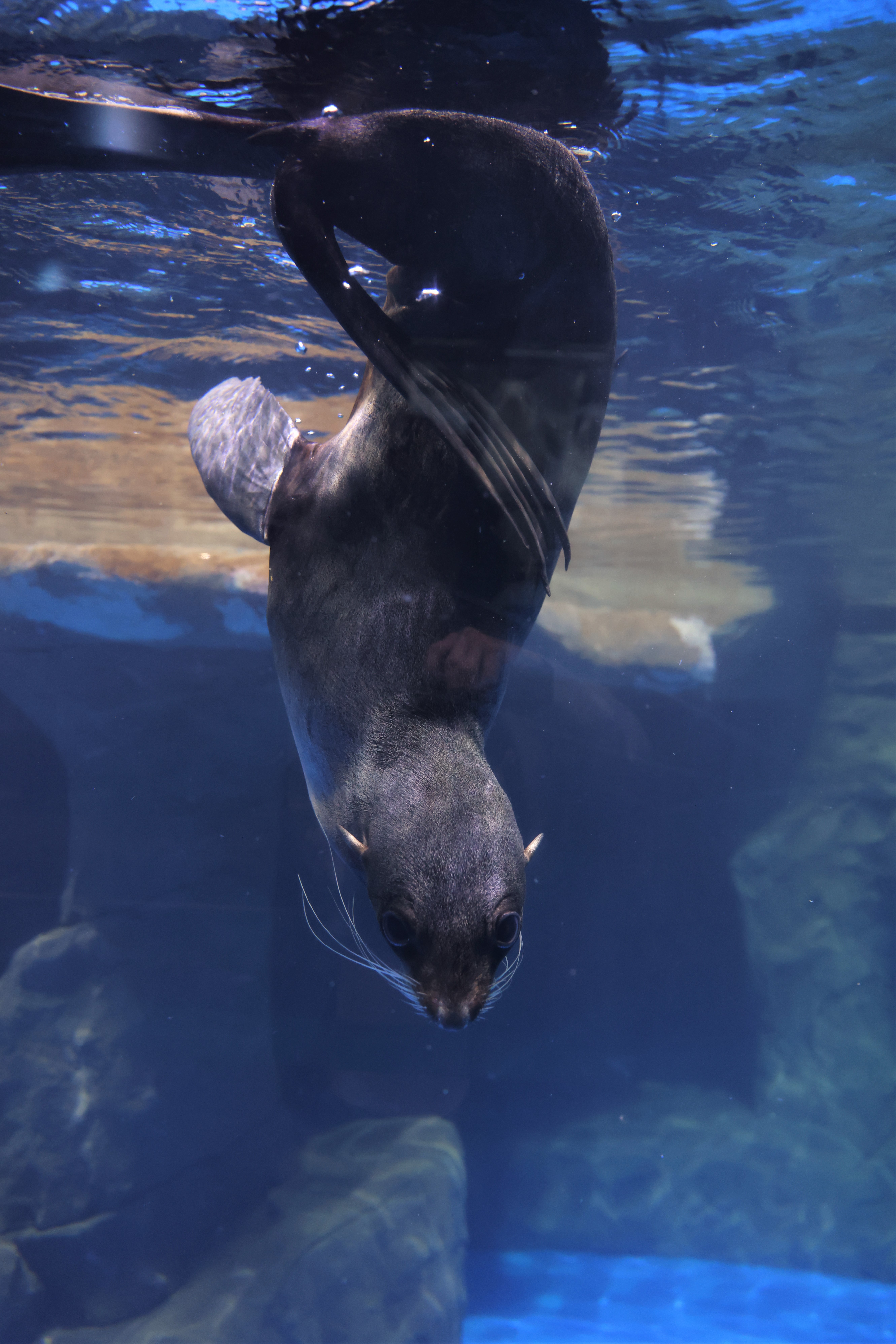More than 100 new specimens of fish have arrived at the Primorsky Aquarium. The newcomers belong to six fish species: the silver arowana (Osteoglossum bicirrhosum), the spotted archerfish (Toxotes chatareus), the dwarf sucking catfish (Otocinclus affinis), the freshwater angelfish (Pterophyllum scalare), and the spotted green puffer (Dichtomyctere nigroviridis). All fish have successfully gone through quarantine and comfortably adapted to their new home, the Science and Acclimation Building.
The majestic and fascinating silver arowana inhabits the Amazon River basin, where it can grow to a length of 120 centimeters and a weight of 20 kilograms. Locals gave it a nickname “river monkey” for its ability to jump out of the water.
The dwarf suckling catfish, or the golden otocinclus is a small and inconspicuous fish native to Brazil. It is an indispensable assistant for aquarists, quickly and effectively eliminating green algae fouling on glass. Moreover, it also cleans aquarium plants.
Pterophyllum is a genus of freshwater fish from the family Cychlidae, known as angelfish. The genus was described over 200 years ago from South America. It is well studied and very popular among aquarists. There are three known species in the genus Pterophyllum (two of them now present at the Aquarium) and about a hundred color varieties, which are the result of many decades of selective breeding.
The spotted green pufferfish belongs to the family Tetraodontidae, the name of which means “having four teeth” in Greek. All members of this group, including the green pufferfish, have fused teeth that form a beaklike structure. The teeth are really sharp and strong. They easily chew on clam shells and snails. This fish looks like a spotted pear with a tail and small fins and seems to be an easy prey for predators. However, it has developed a good defense mechanism. When threatened, it inflates into a ball shape becoming 2-3 times greater in size. Small pointed spines appear on the body. Additionally, this fish contains toxin that makes it foul tasting and potentially deadly to predators.
The spotted, or common archerfish always attracts visitors’ attention. This fish, distributed from Indochina to northern Australia, has a unique way of capturing prey. It can shoot at the insects sitting on tree branches above the water with a jet of water, the behavior known as “spitting”. Archrefish can make a water jet stronger or weaker depending on the distance to the insect and on the size of prey. This sharpshooter has a specially adapted mouth with an internal channel, through which water can be forced out by quick closing of gill covers.
Artem Baranov, Head of the Tropical Freshwater Species Department, shared the secrets of spectacular presentation of this hunting behavior to the visitors. The keepers regularly train fish to use their water spitting ability. They hang pieces of food over the water or stick them to the walls of the aquarium with archerfish. Thus, the fish can only eat if they shoot the pieces of food down.
Visitors will be able to see new freshwater tropical fish in the Tropical Rain Forest exhibit when they grow up.





